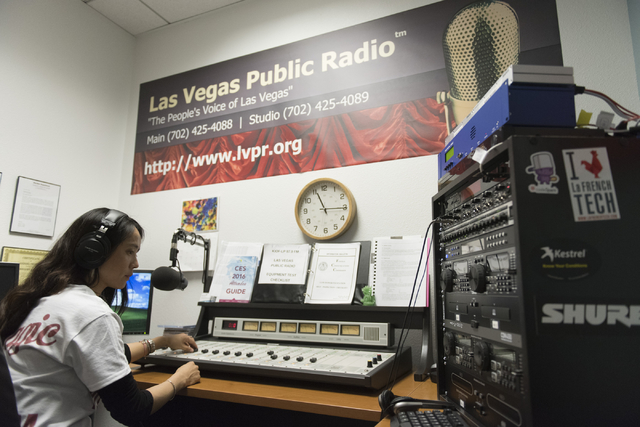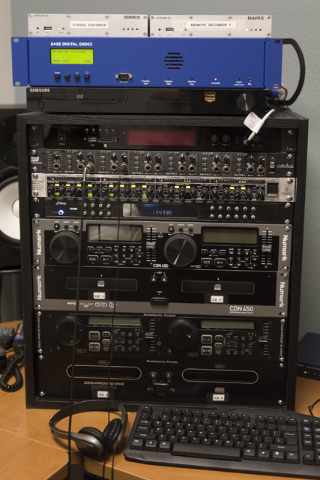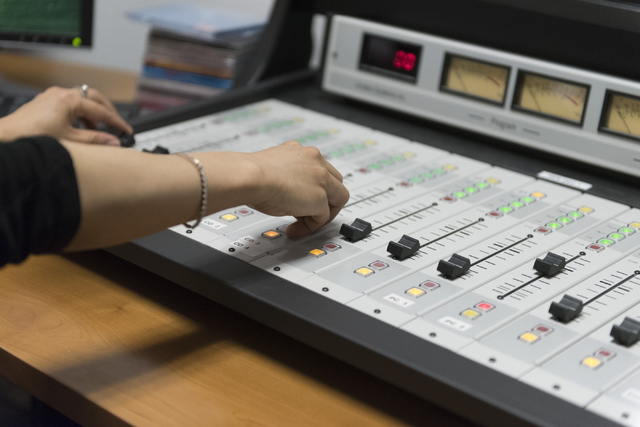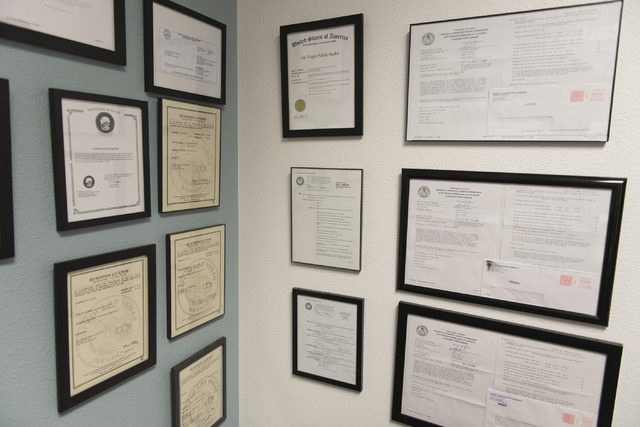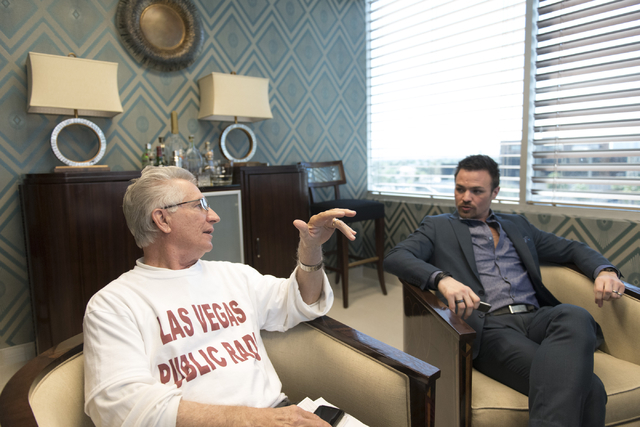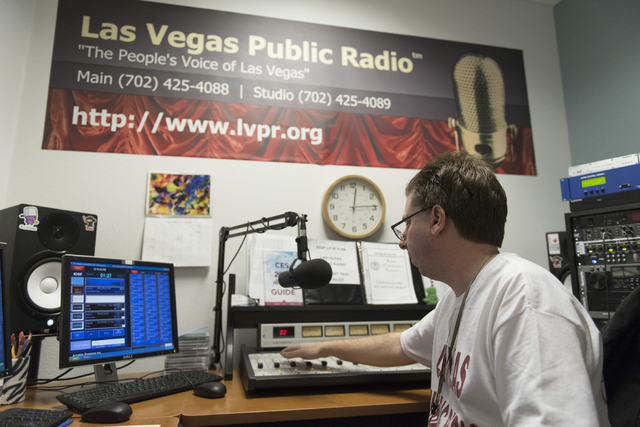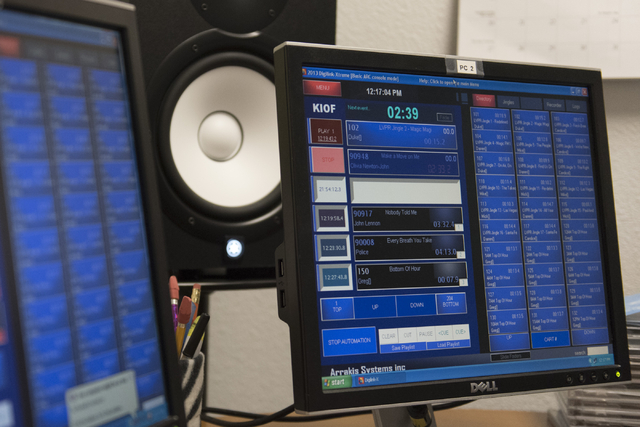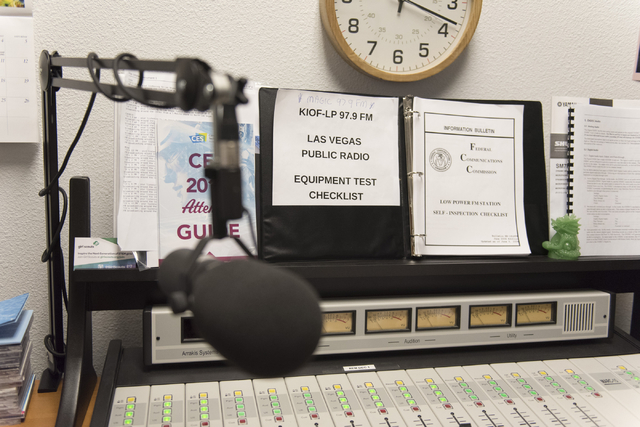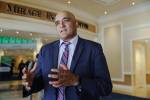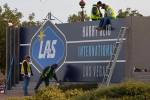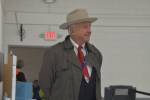New low-power FM radio station on the Las Vegas airwaves
A new radio station has hit the airwaves in the Las Vegas Valley and is striving to be an alternative voice in the community.
KIOF, found at 97.9 on the FM dial, goes by the name Las Vegas Public Radio and is supported in part by T-Mobile. It began broadcasting last month after receiving its license from the Federal Communications Commission.
It’s one of hundreds of low-power stations sprouting up across the country under the Local Community Radio Act, legislation that was passed by Congress and signed by President Barack Obama in 2011.
The goal of the legislation was to open the airwaves for more local programming content as an alternative to commercial radio.
“Today the radio industry has a new face,” said Andrew LaPorta, vice president of marketing for KIOF.
Labor of love
So far it’s been a labor of love and a family affair.
Gregory LaPorta, Andrew’s son, founded Las Vegas Public Radio in 2010. He oversees the station’s day-to-day operations and leads the company’s broadcasting and content strategy.
Andrew LaPorta is a Navy veteran and former mortician and funeral home director in Connecticut. He is also a former teacher at a juvenile detention center in Mojave County, Arizona. His wife, Joanna LaPorta, currently serves as secretary/treasurer at the station.
The station is awaiting approval of its nonprofit tax status. It is not affiliated with Nevada Public Radio or National Public Radio.
“We are an independent radio broadcast media,” Andrew LaPorta said.
NPR stations receive federal funding and some programming through the Corporation for Public Broadcasting. To be eligible, they must meet private fundraising, audience-size and other criteria such as having community advisory boards, open meetings and public financial records.
They also have to demonstrate compliance with FEC requirements for non-commercial stations, said Erika Pulley-Hayes, vice president of the Corporation of Public Broadcasting in Washington, D.C.
The new law for low-power stations, Pulley-Hayes said, “is for serving additional telecommunications outlets to also provide an opportunity for more voices to be heard.”
“There is a very broad robust public radio community across the country that serves local communities with valuable, informational, educational and cultural content,” Pulley-Hayes said. “More voice in communities is always going to be valuable.”
Downtown headquarters
Headquartered in downtown Las Vegas, KIOF has a 100-foot transmission tower at East Cheyenne Boulevard and U.S. 95 in North Las Vegas. With limited 100 watts of power, LaPorta estimates the station’s range at about 10 miles.
Radio enthusiasts began a push in the late 1990s to encourage community broadcasting in the wake of increasing corporate ownership of stations around the country.
After the legislation was signed, the Federal Communications Commission in 2013 opened a brief period where community groups, nonprofits and education institutions could apply for low-power FM licenses.
“The creation of low power FM radio service stands as one of the greatest successes in recent efforts for grassroots media reform,” Prometheus Radio Project, a driving force in the effort, said on its website.
“As a result, hundreds of new low power community stations are broadcasting that otherwise would not be — operated by civil rights groups, schools, farmworker organizations, environmentalists, cultural organizations and others.”
As of December 2015, Prometheus said more than 600 new low power stations were on the air and more than 1,000 had obtained permits.
LaPorta estimated there are a half-dozen new low-power stations in Las Vegas.
Some license restrictions
Licenses cannot be issued to individual or commercial entities or existing broadcasters, cable television system operators, newspaper publishers or other media entities.
Under licensing regulations, the station must provide eight hours of educational programming daily. There is no paid advertising, but donors and backers can get an on-air shout-out for their support.
Right now KIOF is being run by volunteers. Programming involves mostly music. Other regular programs include Joel Osteen Ministries and the Mormon Tabernacle Choir and Orchestra, as well as poetry, literary book readings and old time radio classics. News is provided by Voice of America.
“Right now we’re streaming and we’re testing our streams,” LaPorta said. “We had to do a lot of testing.”
But LaPorta said they are working on developing original programming. One, the “Paul and Dean” morning show hosted by Gregory and Andrew LaPorta, will be a talk-radio format with caller participation to discuss topics of the day.
“The idea is to bring both sides of the argument in,” Andrew LaPorta said. The station also intends programming addressing family matters and issues ranging from mental health and teen obesity to divorce and grief.
Going live
On Saturday the station will also experience another first — live remote broadcasting. It plans to broadcast the Christian Hope Project Easter Festival being held at Craig Ranch Regional Park.
In the age of the Internet and digital delivery, is radio relevant?
“That’s something that we contend with on a daily basis here,” Pulley-Hayes said. “There’s no argument that more and more people are gaining content from digital sources, whether the Internet or other platforms.”
But radio, she said, is still a major communications avenue.
“I see that radio is going to be around for a while,” she said. “People still drive cars and it’s an effective way to reach people.”



